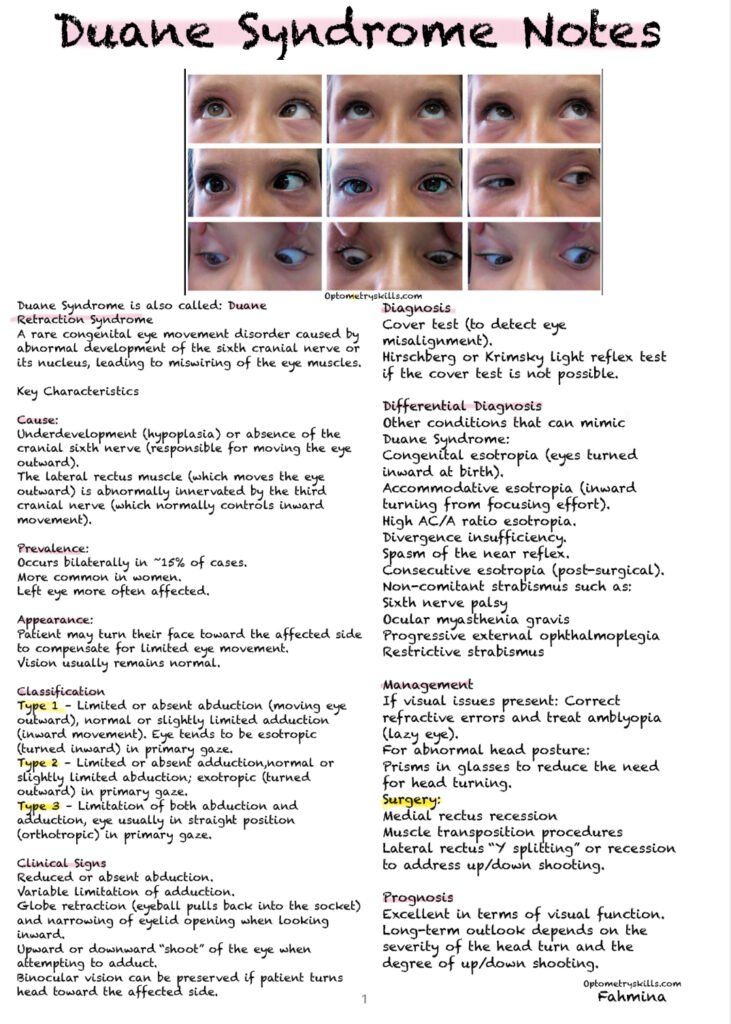
Duane Syndrome Notes


Duane Syndrome: Causes, Symptoms, and Treatment
Duane syndrome, also known as Duane retraction syndrome, is a rare congenital eye movement disorder that affects horizontal eye movement. It is present from birth and is caused by abnormal development or function of the sixth cranial nerve, which controls outward eye movement. The condition is often recognized by the inability to move one eye outward, though other movement restrictions may also occur.
Symptoms and Presentation
People with Duane syndrome may experience several characteristic signs:
- Restricted Eye Movement: The most common symptom is the inability to move one eye outward (abduction) toward the ear. Some cases may also show limited inward (adduction) or even upward and downward movement.
- Globe Retraction: When the eye moves inward, the eyeball may retract backward into the socket.
- Palpebral Fissure Narrowing: The eyelid opening becomes narrower as the eye retracts.
- Head Turning: Many individuals compensate for restricted movement by turning their head to align vision with both eyes.
- Unilateral Involvement: Most cases affect only one eye, usually the left.
- Associated Conditions: While many cases occur in isolation, some patients may also have amblyopia (lazy eye) or systemic issues involving the bones, ears, kidneys, or nervous system.
Types of Duane Syndrome
Duane syndrome is categorized into three clinical types based on the pattern of eye movement limitation:
- Type I: Limited or absent outward movement of the eye.
- Type II: Limited or absent inward movement of the eye.
- Type III: Limited outward, inward, and in some cases, upward or downward movement.
Causes and Genetics
The condition is primarily the result of a developmental abnormality in the sixth cranial nerve (abducens nerve), which fails to form correctly or connects improperly to the eye muscles.
- Congenital Nerve Malformation: The abnormal nerve development leads to restricted movement of the affected eye.
- Genetic Factors: While most cases occur sporadically without a family history, some are inherited in an autosomal dominant pattern. Certain cases are linked to genetic mutations, such as in the CHN1 gene.
Treatment
Treatment for Duane syndrome depends on the severity of symptoms and whether it interferes with vision or daily life.
- Observation: Mild cases often require no treatment beyond regular monitoring.
- Surgery: In more severe cases, surgery can help improve eye alignment, reduce head turning, and manage abnormal movements.
- Patching: If amblyopia (lazy eye) is present, patching the stronger eye may be recommended to strengthen the weaker eye.
